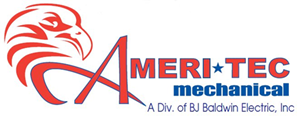
A furnace is usually a background player at home, keeping you warm across the cold winter months. It regularly won't be noticed until something goes wrong.
One root cause could be that your furnace has a cracked heat exchanger. It can potentially be hazardous, so it’s worthwhile to familiarize yourself with the signs of a cracked heat exchanger and what you can do if you are worried that may be the problem.
What Is a Heat Exchanger in a Furnace?
A heat exchanger transfers heat from the combustion chamber inside your furnace to the air that moves inside the system. It usually does this via coils or tubes that heat up the air while functioning as a barrier to keep gas formed in the combustion chamber, called flue gasses, from getting out into your home.
Is a Cracked Heat Exchanger Dangerous?
Because of its important role, it shouldn't come as a surprise that a cracked heat exchanger can be very dangerous. A damaged heat exchanger can permit dangerous gasses – including carbon monoxide, which can be lethal – to flow across your home.
For that reason, do NOT use your heating if you believe there's a crack in the heat exchanger, as letting it run could make your entire household ill. Reach out to an HVAC professional right away if you are worried your heater has a cracked heat exchanger that needs to be repaired.
Four Symptoms of a Cracked Heat Exchanger:
- Furnace turns off: A cracked heat exchanger may cause your furnace to shut off.
- Strange Smells: If the air escaping your furnace has an intense chemical odor, it could be evidence gas is seeping through cracks in your heat exchanger. These gasses, which will often smell like formaldehyde, are a significant warning sign.
- Carbon monoxide alarm is triggered or you feel health problems: If a cracked heat exchanger is relieving carbon monoxide in your home, your carbon monoxide alarm should go off or household members could start experiencing signs of carbon monoxide poisoning. Side effects include headaches, dizziness, weakness, nausea, vomiting or feeling sleepy. If your alarm goes off or you feel sick, leave the home right away and then call for help.
- Soot: If you notice black sooty accumulating on the exterior of your furnace, it’s more evidence something could be seriously wrong.
What to Do if the Furnace Heat Exchanger is Cracked
If you worry your furnace has a cracked heat exchanger, call a professional with extensive experience in furnace installation Narvon right away so they can inspect your system and, if required, handle a furnace heat exchanger replacement. Costs will fluctuate depending on the situation, but estimates run in the neighborhood of $1,000 to $3,000.
Fortunately, the good news is that heat exchangers are regularly protected by the warranty. It's a good idea to review the warranty paperwork on your furnace, because while the warranty might not cover the entire cost of repairs, it could significantly reduce your bill.
How to Prevent a Cracked Heat Exchanger in Your Home
One of the best ways to prevent a problem in your furnace overall is via consistent furnace maintenance. Furnaces provide the best possible return on investment when they work efficiently. Contacting a certified professional to examine your furnace for old parts, clogged filters and other potential problems can keep you from getting a big bill later on.
It’s also beneficial to take a look at your furnace filters every few months – it’s recommended some filters be replaced every 90 days or sooner if they are dirty or grimy. While the filters aren't connected to the heat exchanger itself, the strain of dragging air through a clogged filter makes the entire furnace work more vigorously to accomplish its job. And the harder your furnace has to work, the more wear and tear pieces like the heat exchanger will experience.
